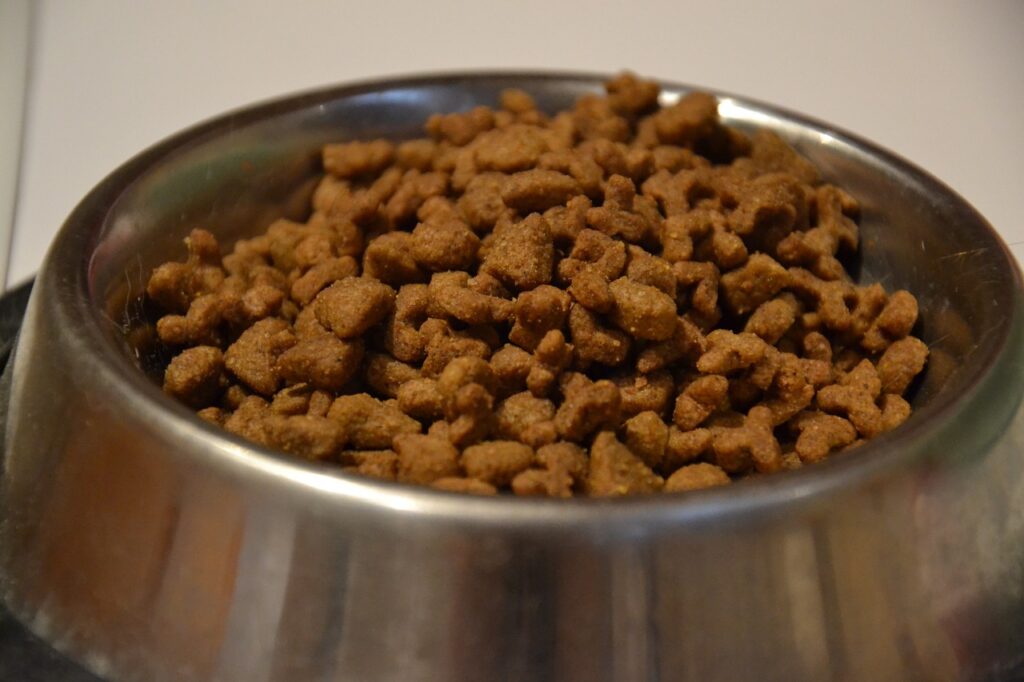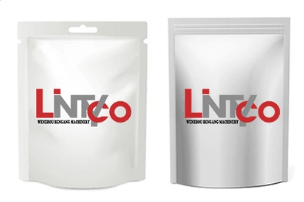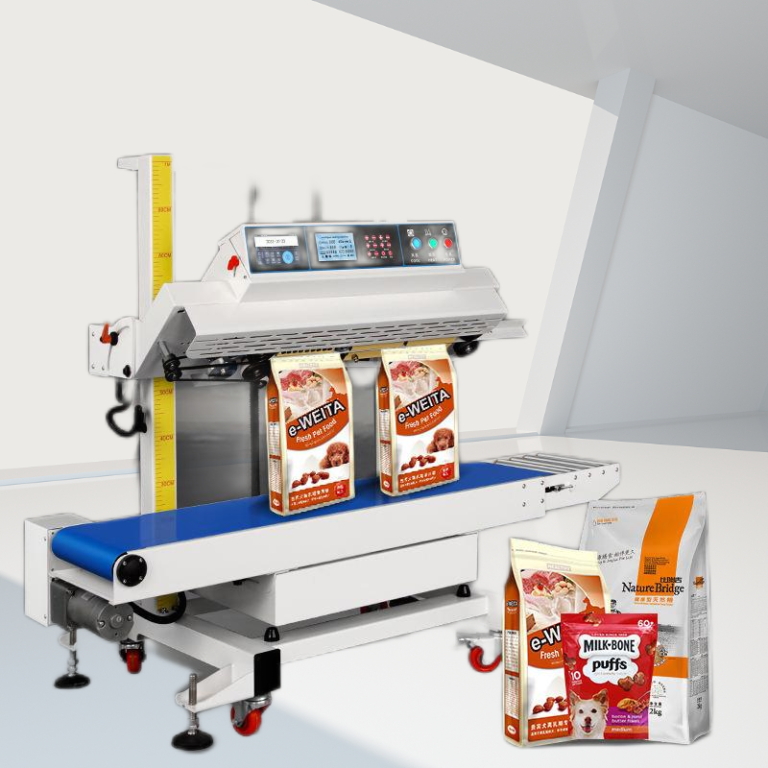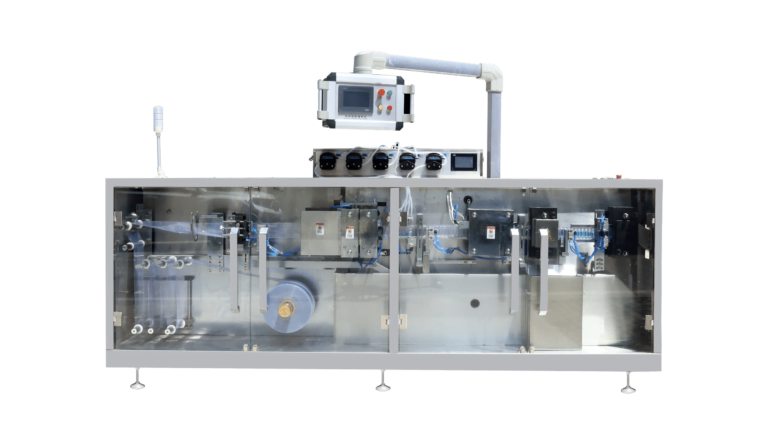Pet food is a significant market, with pet owners in the United States spending over $30 billion each year on their pets’ food. Choosing the correct pet food packaging machine is essential to ensure the quality and safety of pet products. This guide will provide details on important considerations to keep in mind when selecting the perfect pet food packaging machine for your company.
Understand Your Packaging Requirements
Before diving into the different types of machines available in the market, it’s essential to understand your specific packaging requirements. Consider the following factors:

- Type of pet food: Dry, semi-moist, or wet dog food will have different packaging requirements. For instance, Dry pet food requires packaging that prevents moisture exposure and oxidation, such as multi-layer bags or rigid plastic containers with moisture barriers. Semi-moist pet food needs airtight packaging like retort pouches or trays to lock in moisture and prevent contamination.Wet pet food calls for packaging that creates an anaerobic environment like retort pouches, cans or trays. This prevents spoilage from exposure to air or microbes.
- Package size and shape: Depending on your target market and the size of your pet food products, you’ll need a machine that can handle different package sizes and shapes.
- For small or lightweight pet food like treats or snacks, smaller pouches, sachets or trays are suitable. Machines must handle precise, efficient filling and sealing.
- For larger sizes like standard wet or dry food bags, machines should accommodate bags of 10-50 lbs. Bags require durable sealing to avoid tearing.
- Irregular shapes like cans, tubs or shaped trays also require more versatile machines to fill and seal contoured, asymmetrical containers.
- Material type: Choose a machine compatible with the packaging material you’ve selected, such as plastic, aluminum, or paper-based materials.
- Plastic materials like polypropylene or polyethylene are common for pouches, trays, tubs and containers. Machines must provide strong heat seals and cutters suited for plastic.
- Aluminium like cans or foil trays need machines to properly fill, shape and seam the material. Sealers bond layers together and cutters accurately size containers.
- Paper or paper laminates used for multi-wall bags and sachets require precise, consistent sealing via heat, ultrasonic vibrations or pressure-sensitive adhesives. Machines must prevent tearing of bags from over-sealing.
- Retort-grade materials that withstand high-pressure processing require advanced machines to properly seal for steaming and create strong but flexible seals.
Evaluate Different Types of Packaging Machines
Once you’ve identified your packaging needs, research the various types of pet food packaging machines available in the market. Some popular options include:
- Filling machines Automated filling machines, like auger fillers or multi-head weighers, quickly and accurately measure and dispense dry or wet pet food into packages. They can handle a variety of bag and cup sizes at rates of up to 120 packages per minute. Volumetric fillers and net weigh fillers are very precise, helping with portion control and reducing product waste.
- Bagging machines: Bagging machines are capable of automating the process of opening, filling, and sealing bags, particularly those used for pet food products. These machines are capable of processing up to 30 bags per minute, but require specific bags that are designed to work with the equipment in order to function properly.
- It is important to ensure that your bagging equipment is compatible with your filling equipment for the best results. Flexible Form Fill&Seal Machines come in different types including vertical fill and seal (VFFS) machines, horizontal fill and seal (HFFS) machines, and premade pouch packaging machines.
- Tray sealing machines: For sealing bags and other pet food packages, automatic sealing machines like heat sealers provide safe and secure closures. Band sealers and tape sealers can also be used. Heat sealers usually provide the best resistance against oxygen, moisture, and contaminants. Sealing machines need to be properly matched to your bag and container types.
- Cup filling and sealing machines: For wet pet food in cups, specialized cup filling and sealing machines handle precise filling, foil sealing and date coding all in one system. They can fill and seal up to 180 cups per minute. Cup materials and foil types need to be specifically matched to the equipment for proper operation.
- Case packing machines: Case packing machines are also called case erectors or case sealers. They automate the process of erecting and sealing corrugated boxes. These boxes are used for transporting pet food and storing items in warehouses. They can erect and seal up to 30 cases per minute. This ensures the cases are formed correctly and sealed securely. This protects the contents during shipment and before palletizing.
Take Into Account the Degree of Automatization and Output Capability
Depending on your manufacturing demands and financial budget, opt for a machine with a proper degree of automatization:
- Semi-automated machines: These machines require manual interventions at some stages, such as loading products or changing film rolls. They are ideal for small companies or those with limited funding.
- Fully automated machines: These machines handle the whole packaging process without any manual intervention. They suit large companies with high output volumes.
Ensure the machine you choose can accommodate your present production capacity and has room for future growth.
Look at the Attributes and Modification Alternatives of the Machinery
Seek out machinery with attributes that enhance productivity, for instance:
- Quick conversion functions: A mechanism that allows trouble-free and speedy conversions between various package dimensions will economize time and reduce stoppages.
- Ergonomic interface: A mechanism with a simple and instinctive command center will render it easier for your squad to manage and uphold.
- Adaptation selections: Ensure the machinery you elect can be acclimated to fulfill your explicit packaging stipulations.
Popular Pet Food Packaging Types

- Stand-up pouch:
- Enhanced Product Presentation: stand-up pouches offer ample space for businesses to advertise their branding and labels. This enables them to create a recognisable brand identity.
- Improved Product Protection: They are made from durable materials that provide excellent barrier protection against moisture, light, and air. This further ensures the quality of your product.
- Increased Efficiency and Cost Savings: Stand-up pouch packing machines use less material than traditional methods. This leads to lower material costs and less waste. This increases efficiency and saves money.
- Space-Saving Design: This space-saving design allows businesses to maximize their production floor space, leading to increased efficiency and productivity. Additionally, the compact nature of stand-up pouches means that they require less storage and transportation space, further contributing to cost savings.
Common issues encountered with packaging equipment
- Jamming and clogging: One of the most frequent problems with packaging machines is jamming of materials or clogging of machine components. This could be due to incorrect machine settings, wear and tear of parts, or incompatible packaging materials. Regular maintenance, adjustment of settings, and use of recommended packaging stocks can help prevent jamming and clogging.
- Inaccurate sensing: A multitude of packaging machines utilize sensors to identify packaging material, product positioning, temperatures, and other related factors. If the sensors are defective or imprecise, it can result in errors in the packaging process, such as improper sealings, erroneous date stamping, or products that are missing. It’s a good idea to test sensors regularly and replace any non-functioning units.
- Software glitches: The software or control systems that operate packaging machinery can also be prone to issues like bugs, errors, and crashes which can disrupt the packaging process. Software should be updated regularly and servers restarted to ensure optimal performance.
- Mechanical failures:Like any machine with moving parts, packaging equipment can suffer from mechanical problems like broken rollers, conveyor belts, grippers or seal bars. Preventive maintenance and servicing help minimize frequency and severity of mechanical failures. Replacement of worn out parts may also be required to ensure consistent operation.
- Inadequate operator training: The person operating the packaging machinery has a significant impact on its performance. Lack of proper knowledge about ideal machine settings, packaging materials, and standard operating procedures can lead to inefficiencies, downtime and product defects. Comprehensive operator training is key to maximizing packaging equipment productivity.

Assess After-Sales Support and Warranty
Lastly, consider the after-sales support and warranty provided by the manufacturer or supplier. A reliable supplier should offer comprehensive technical support, spare parts availability, and a robust warranty to ensure your investment is protected.
By considering these factors, you’ll be well-equipped to choose the perfect pet food packaging machine for your business. With the right machine, you can streamline your production process, maintain product quality, and ultimately, grow your pet food business.





